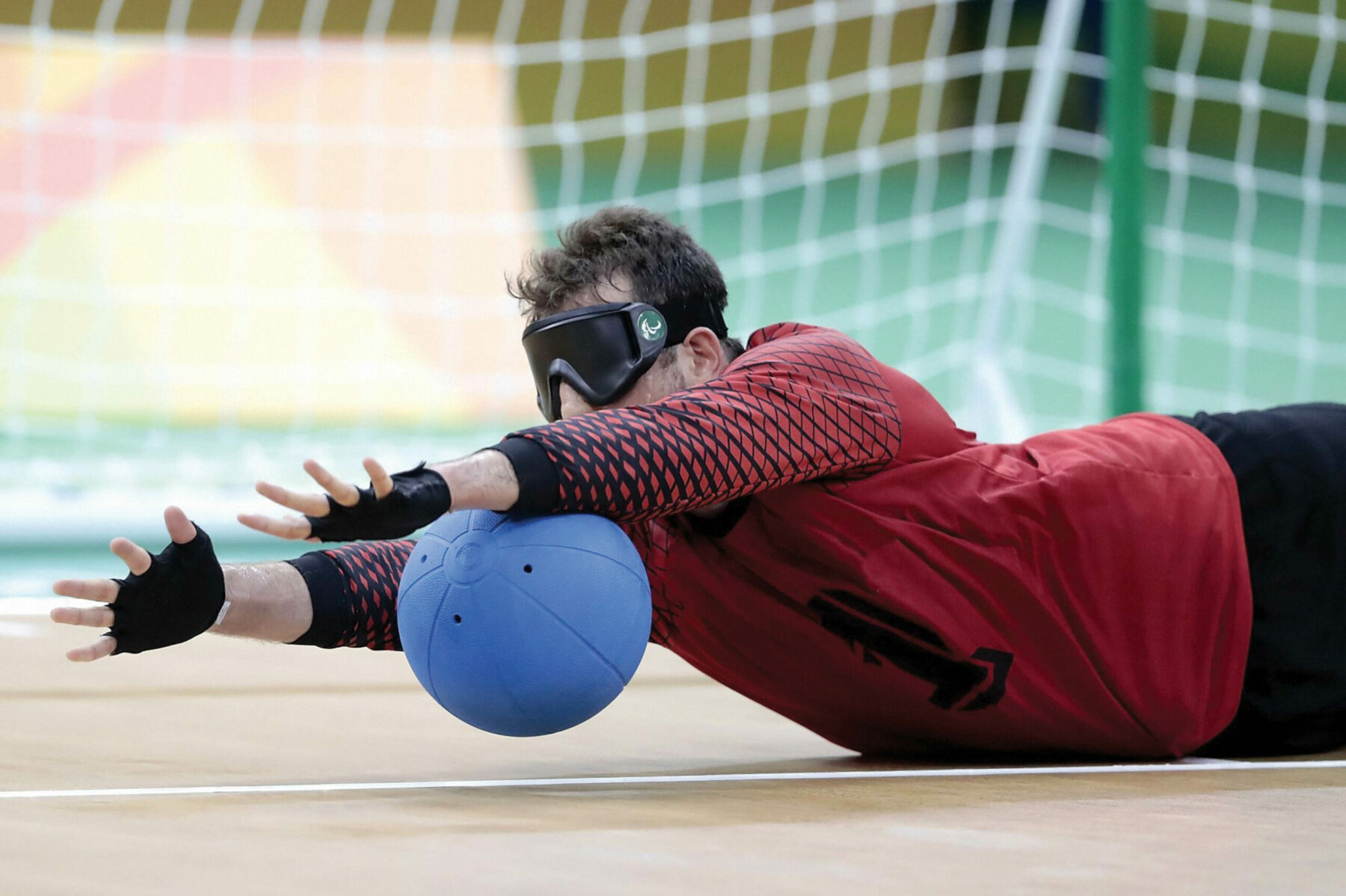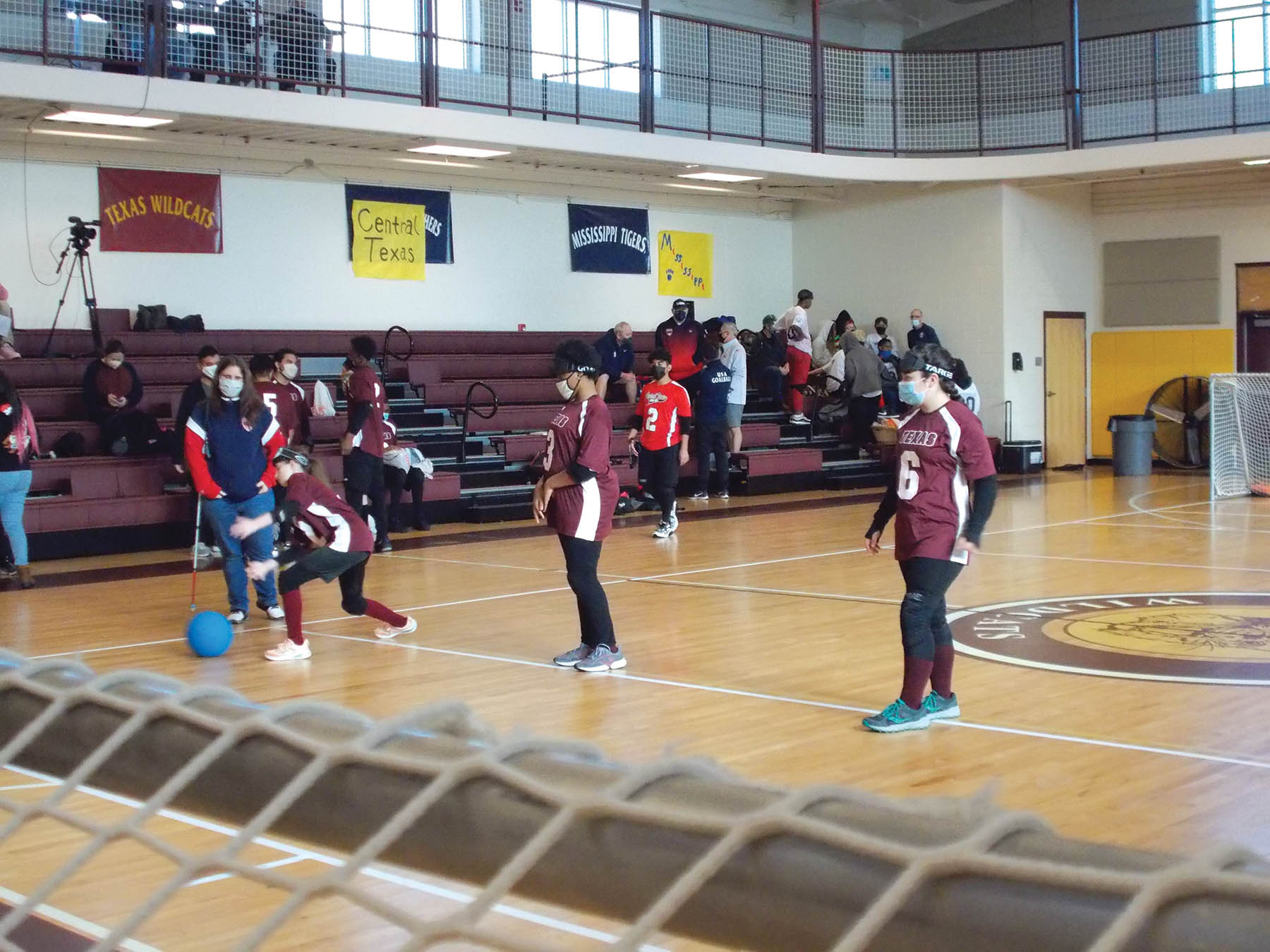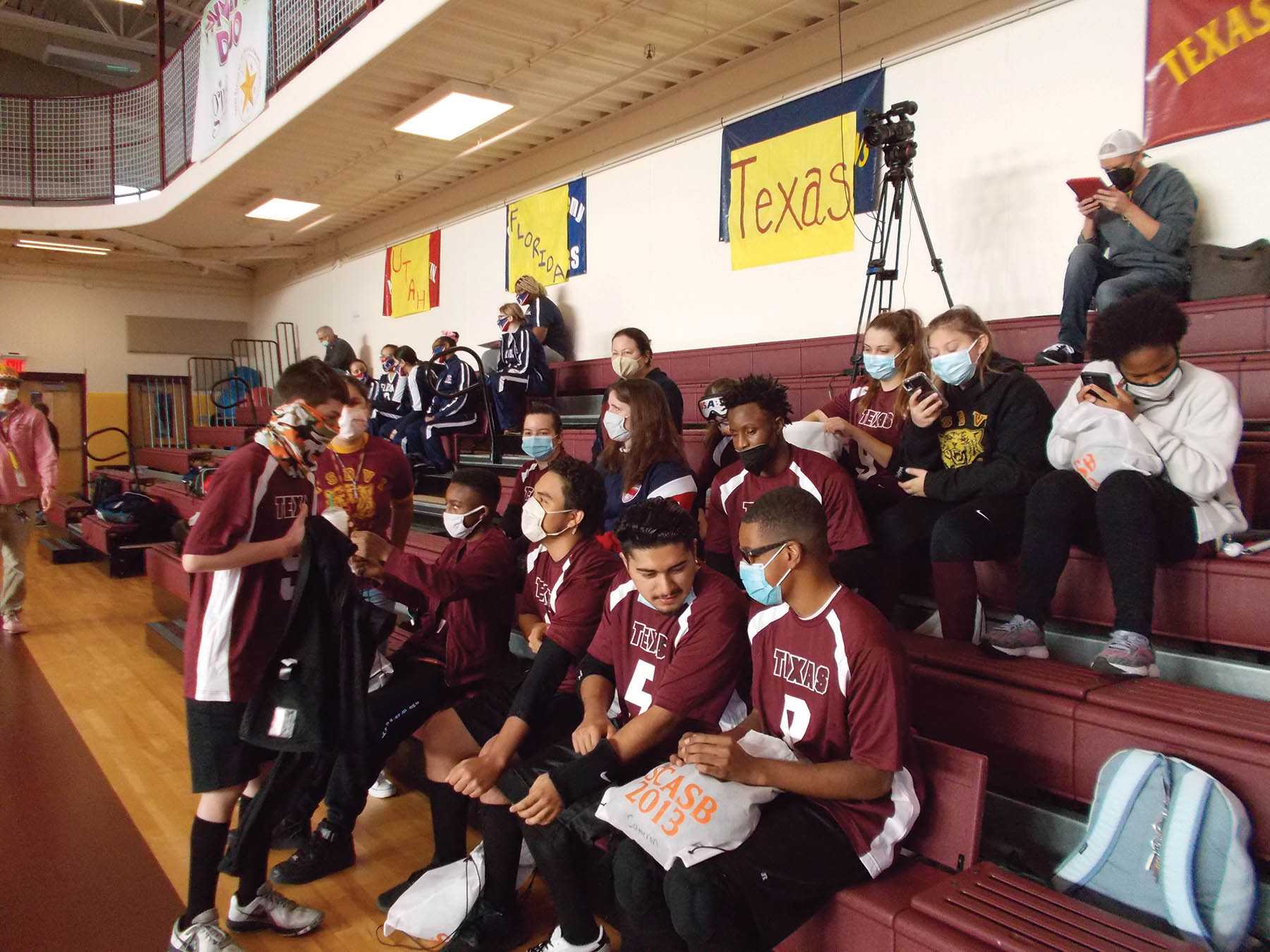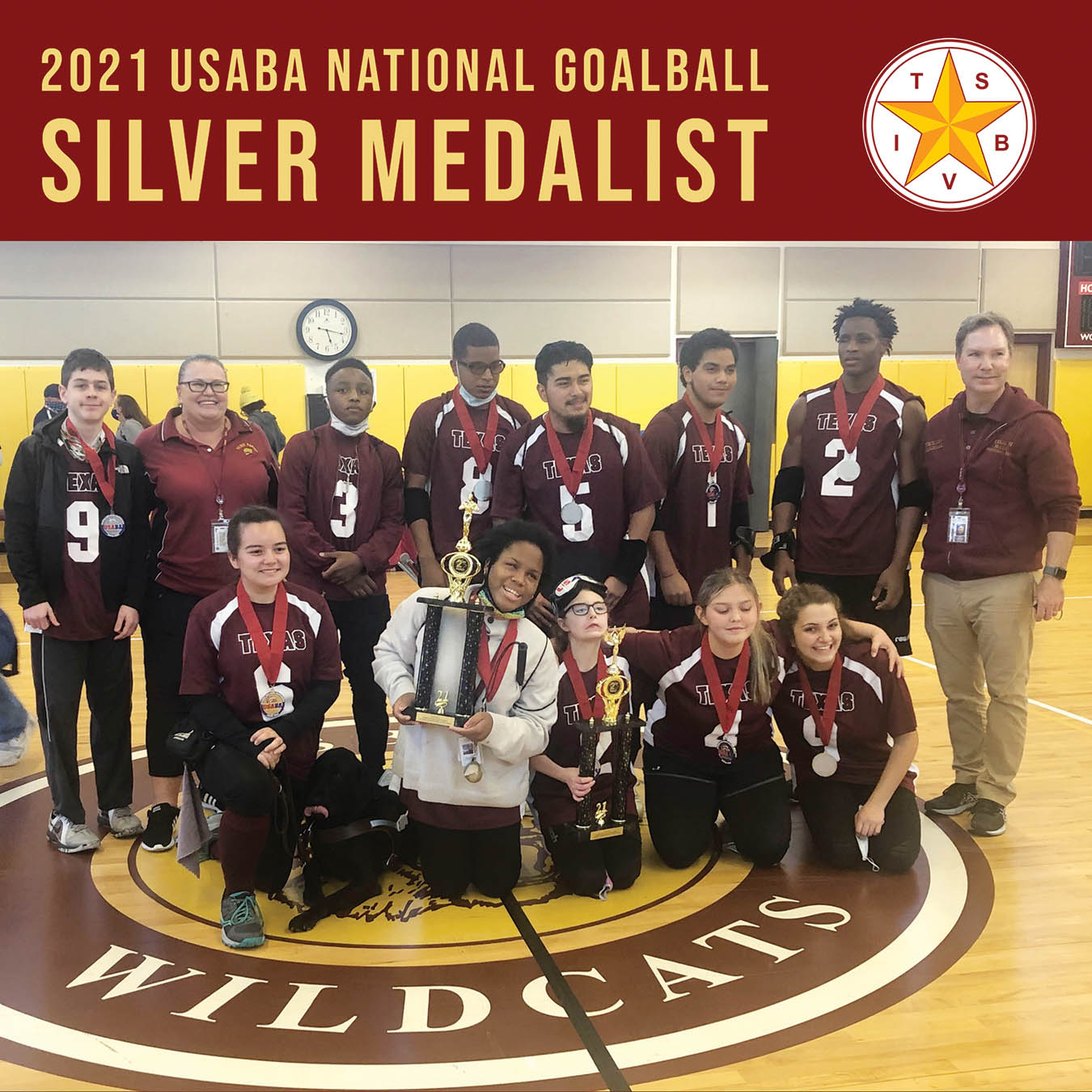A Deep Dive on the Texas School for the Blind and Visually Impaired

Not many sports require complete silence. Tennis players prefer it, but for them, it’s more about formality. For goalball players, silence is a matter of a win or loss. The arena falls silent as six blindfolded players make their way to their positions. The sound of a dense set of jingle bells flows through the arena as the ball is hurled across in an attempt to score a point.
Goalball is one of the many sports offered at the Texas School for the Blind and Visually Impaired (TSBVI). The school serves children with vision loss from kindergarten to the 12th grade, with the addition of an exit program after graduation.

The campus operates just as any other school would. While instruction is tailored to meet the needs of children who have low vision, their vision impairment does not, in any way, hinder their ability to participate in extracurricular activities such as sports, band or theater. Rather, this allows the school to think outside of the box when considering inclusivity.
“For our kids with complete vision loss, it’s helpful for us to use a tactile map of the field, track (and whatever else), so they can get a better understanding of the layout,” says Tammy Reed, a goalball coach and co-athletic director at TSBVI. “We also use hand-under-hand (technique) to show the kids certain movements. In the beginning stages of learning new movements, it’s helpful for them to have someone physically move or demonstrate their hand or arm placement to grasp proper form.”
In addition, audio cues largely play a role in the success of blind athletes, in any sport.
While all coaches at TSBVI are certified through the United States Association of Blind Athletes, the heart of the sport and the love to compete is really what brings students and staff together. The coaches do everything they can to continuously improve and adapt their coaching to best lead their athletes.
While the school offers multiple extracurricular opportunities such as cheer, wrestling, track swim, and triathlon teams, their primary focus is goalball.
“Goalball was created in 1946 to help rehabilitate World War II veterans who lost their sight,” Reed says. “It’s the one sport that is made specifically for the blind.”

According to the National Association of Blind Athletes website, goalball is played on an indoor court between two teams. There are three players of each team on opposite ends of the court standing in front of long nets. Picture a large and long soccer goal.
Each team is split into three positions: center, right- and left-wing. On the offensive side, a person throws the ball. The object of the game for the defensive side is to not let the ball pass the team and land in the net.
All three offensive players start on their knees so they are able to move, and dive as they listen in an attempt to block the ball. A goalball is about the size of a basketball and is filled with bells so it can be heard as it rolls across the ground. Though goalball is a spectator sport, the game requires complete silence until a point is scored.
High school goalball season runs from August to November. TSBVI recently hosted the 2021 United States Association of Blind Athletes’ high school goalball championships, where TSBVI’s girls and boys teams both won second place. TSBVI has also produced a number of talented athletes who have been invited to train at The USABA goalball residential training center as well as paralympic trials.
The school also offers volunteer opportunities. Many volunteers love throwing on a blindfold and trying these sports out themselves. The University of Texas at Austin’s football team even came to volunteer a few years ago and had the opportunity to play goalball.

“The TSBVI team beat the football team in a friendly game,” Reed says. “The UT students were amazed at how hard the balls got thrown and at the sportsmanship of kids. I think it was a real eye-opener for them.”
Alex Argüello, the head of community engagement at TSBVI, encourages anyone in the Austin area to come out and experience any sporting event hosted at TSBVI.
“Being at the goalball national championships, I was blown away by the discipline, both mentally and physically, that these teams go through,” Arguello says. “Getting people out here to experience any of our sports would do a lot to show the level of athleticism and determination these kids have.”






